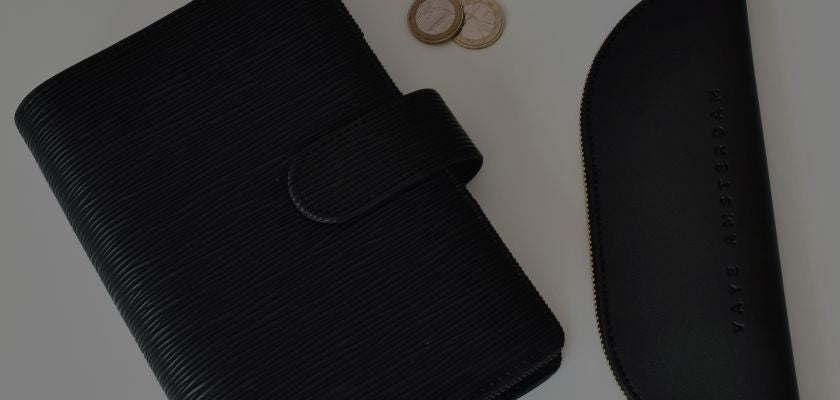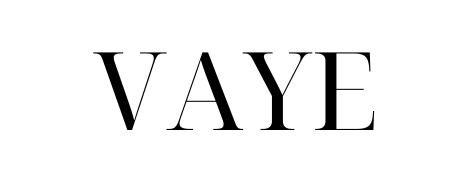
Start collecting cash with this handy step-by-step plan
Share
There are various ways to stuff cash and it's completely customizable. But where exactly do you begin? In this step-by-step plan, we'll start with the basics of cash stuffing so you can track your progress and achieve your goals.
Preparing for cash stuffing
It's crucial to always remember: budgeting is like a spa day for your wallet. So don't forget to enjoy it yourself! For example, put on your favorite playlist and light a nice scented candle. Treat stockpiling cash as a self-care moment, and above all, don't forget to savor your progress.
Step 1. Insight
It's obvious: to start stockpiling cash, it's important to understand your finances. You can use your bank statements, for example, for an honest and complete overview. Divide your savings into the following categories:
- Fixed costs per month (rent, utilities, insurance, etc.)
2. Variable costs per month (groceries, gasoline, clothing)
3. Annual expenses (municipal taxes, Christmas, birthdays, car maintenance, etc.)
In the next steps, we will use these three categories to determine the monthly budget.
Personally: I use a budget planner for an overview
Step 2. Calculate the annual expenses per month
For annual expenses, first determine the month in which you need it, for example, Christmas in December. Then calculate the amount you need to set aside each month to cover your annual expenses.
For example: if you start in January and want to save €500 for Christmas, you need to save €41 per month. If you start in June, that's €83 per month.
Step 3: Determine your budget
If you now add up your fixed, variable, and annual expenses each month, you get your monthly budget. Fixed expenses remain in your bank account, while variable and annual expenses can be debited and distributed among the cash-stuffing envelopes.
It's advisable to always maintain a buffer in your bank account for variable expenses you can't pay in cash, for example, at an unmanned gas station. In the next step, we'll ensure you don't lose track of this.
Is your monthly budget higher than your salary? Try reducing expenses by category. Is your monthly budget lower than your salary? In step 5, we'll look at savings goals and challenges.
Tip: Ambition is good, but don't forget to consider feasibility. Don't reduce your budget so drastically (unless it's easily achievable, of course) that it becomes unsustainable.
Step 4. Set up cash stuffing binder
Now comes the fun part: setting up the binders. Start with a budget sheet where you enter how much cash you'll add to each category on your payday. This is the amount you'll need to add to step 3.
Next, choose dashboards that suit your style—it's supposed to be fun, after all! Decide whether you want to keep the categories monthly, or whether you'd prefer to organize some categories weekly. Groceries and gas are often categorized weekly. If you prefer to have these costs weekly, you can use the dashboards for a week, or you can keep your weekly budget in your wallet. Be careful: if you keep it loose in your wallet, it's easy to confuse things like groceries and gas. You could use a wallet folder to keep track of everything.
You can choose whether to also add annual expenses to this folder, or to add them to a folder with only savings goals.
Personally: I try to make annual expenses as fun as possible by turning them into a savings challenge. More on this in step 5.
You can then choose whether to use one general budget sheet on the front of your binder, or place a separate budget sheet behind each dashboard. If you choose to do this for each dashboard separately, you'll have insight into your monthly budget per category.
Step 5. Setting up a savings folder
You can choose to start a second binder with all your savings goals, or combine them into a single binder. Instead of a budget sheet, you can use a savings sheet, which you insert into the binder so you have a clear overview of how much you need to add to your savings goal each month to reach it. A budget sheet is also included on the back of these sheets.
Afterward, you can choose to set it up with a dashboard or a savings challenge. With a savings challenge, you color in boxes or icons to track your progress. You add up all the boxes on the savings challenge and divide this by your total annual expenditure. On the savings challenge, you write down the value of each box or icon.
Do you have some money left over from your paycheck? You could choose to start by setting up your annual savings goals as soon as possible, or you could choose to start a different savings challenge, such as a small change savings challenge, a vacation savings challenge, or a month-in-advance savings challenge.
Personally: I like to divide as much as possible into challenges because it allows me to clearly see my progress. I like saving with a clear goal, so I choose to complete the annual savings goals first; it gives me peace of mind. I also use a small change challenge "for fun"; I don't have a deadline for it.
Step 6. Monthly cash stuffing and saving
Do you have any money left over in your budget binder? You could add it to the savings challenges. You could also choose to use your debit card less next month and add this money to your digital savings account.
Monthly savings goals
Is your savings goal full? You could deduct this from the money you'd withdraw next month and transfer it to your savings account. You could then fill the envelope with placeholders so you always see what you've already achieved.
Feel like you have too much cash at home? Then use the cash in your monthly cash stuffing folder, transfer the amount to your savings account, and use a placeholder.
Getting started with cash stuffing
Our handy starter set includes dashboards, saving challenges, placeholders, and budget and savings sheets to get you started.
